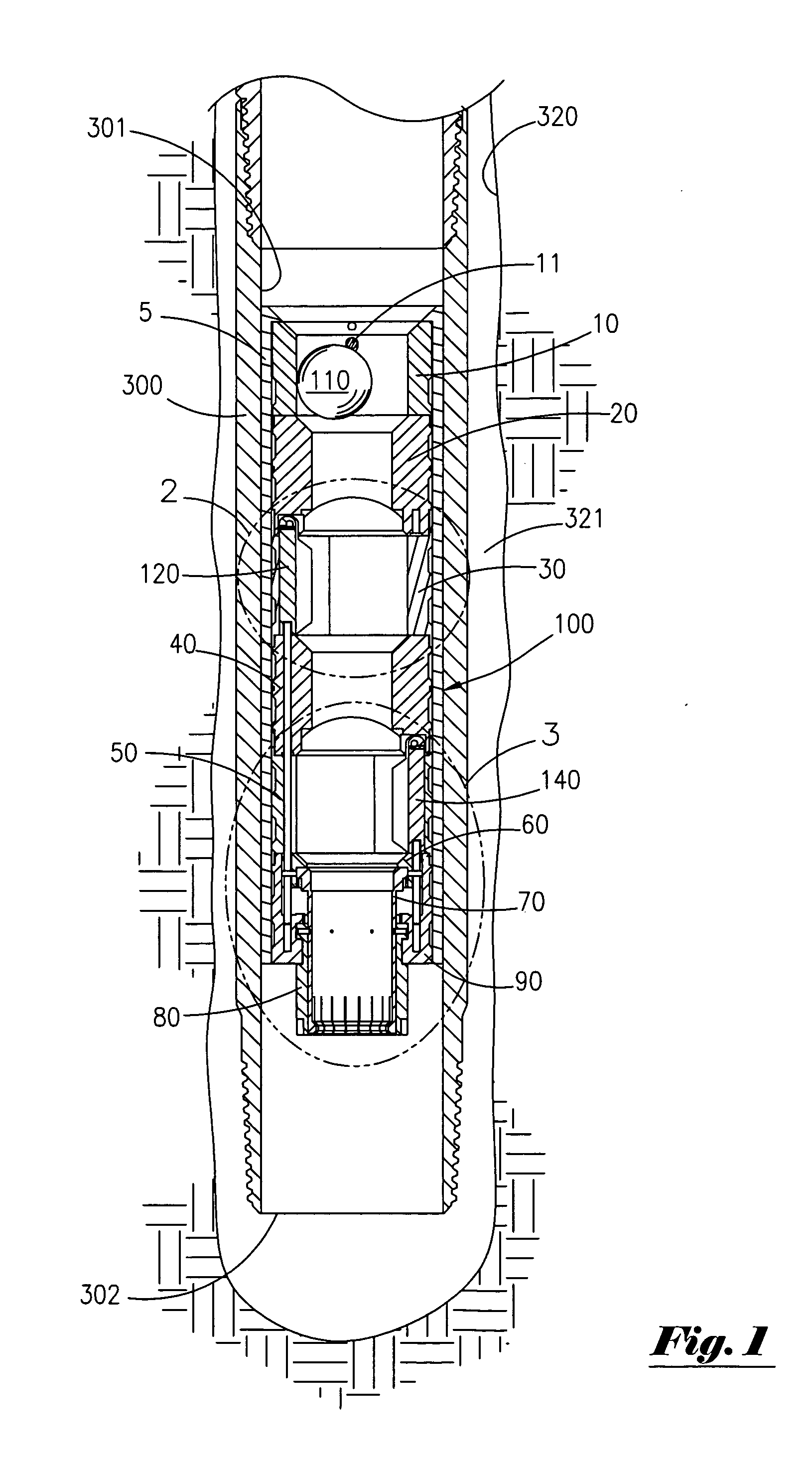Large bore auto-fill float equipment
a float equipment and large bore technology, applied in the direction of valve operating means/releasing devices, borehole/well accessories, transportation and packaging, etc., can solve the problems of inability to adjust the activation variables of existing auto-fill systems, large internal flow bores with relatively small diameters, etc., to achieve maximum debris tolerance, increase the flow rate of the auto-fill, and increase the effect of fluid pressur
- Summary
- Abstract
- Description
- Claims
- Application Information
AI Technical Summary
Benefits of technology
Problems solved by technology
Method used
Image
Examples
Embodiment Construction
[0041]FIG. 1 depicts a side sectional view of “auto-fill” type float assembly 100 of the present invention installed within a wellbore 320 which extends into the earth's crust. As depicted in FIG. 1, float assembly 100 is installed near the bottom (distal) end 302 of casing string 300 which has a central flow bore 301. Generally, float assembly 100 of the present invention permits cement slurry to flow down central flow bore 301 and out the open distal end 302 of casing 300 and into annular space 321 formed between wellbore 320 and the external surface of casing 300. Float assembly 100 permits cement slurry to flow out of distal end 302 of casing 300, while preventing back-flow of such heavy cement slurry into central flow bore 301 of casing 300 when pumping ceases. Without float assembly 100, relatively heavy cement slurry pumped into annular space 321 can “U-tube” or reverse flow back into central flow bore 301 of casing 300.
[0042]As set forth in greater detail below, float assemb...
PUM
 Login to View More
Login to View More Abstract
Description
Claims
Application Information
 Login to View More
Login to View More - R&D
- Intellectual Property
- Life Sciences
- Materials
- Tech Scout
- Unparalleled Data Quality
- Higher Quality Content
- 60% Fewer Hallucinations
Browse by: Latest US Patents, China's latest patents, Technical Efficacy Thesaurus, Application Domain, Technology Topic, Popular Technical Reports.
© 2025 PatSnap. All rights reserved.Legal|Privacy policy|Modern Slavery Act Transparency Statement|Sitemap|About US| Contact US: help@patsnap.com



